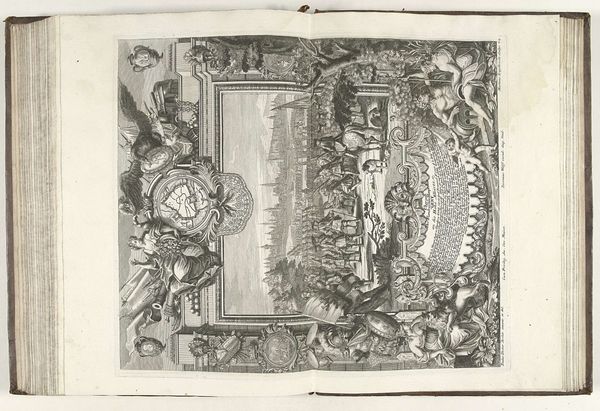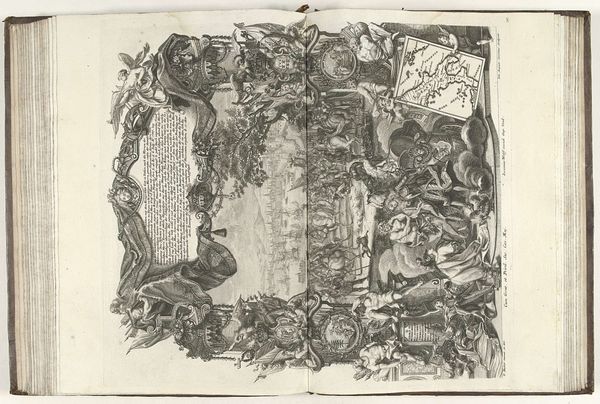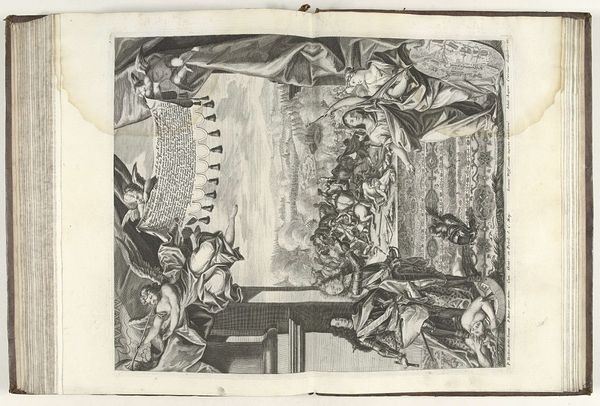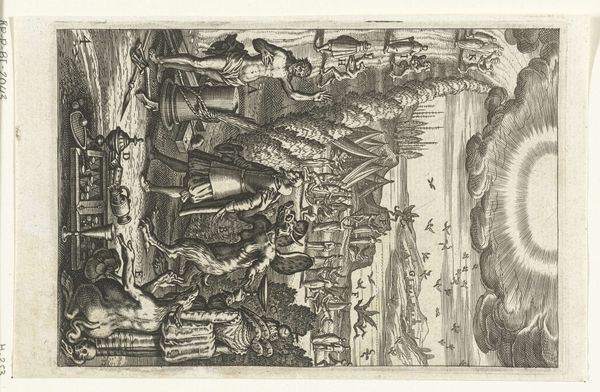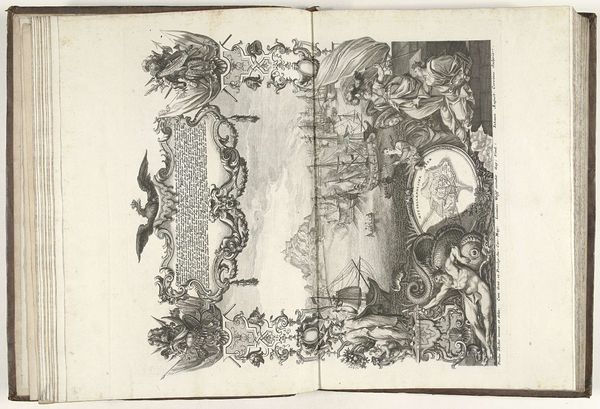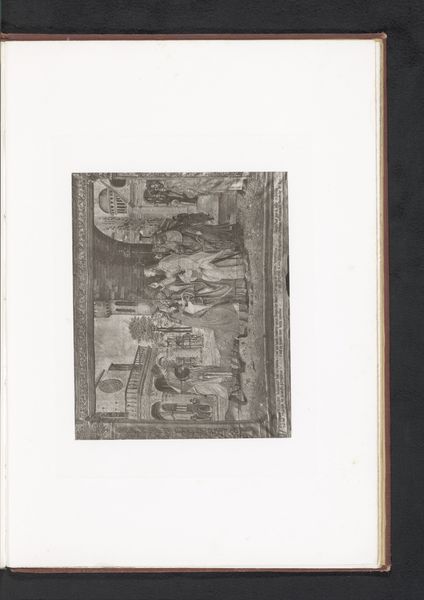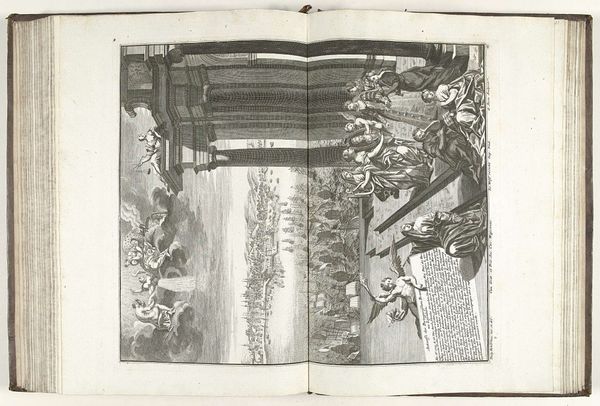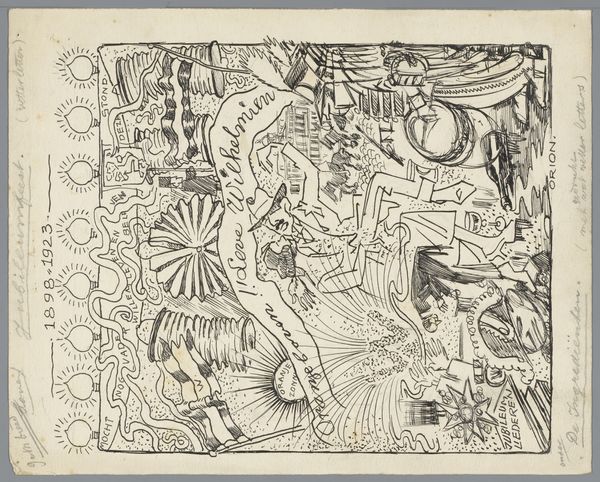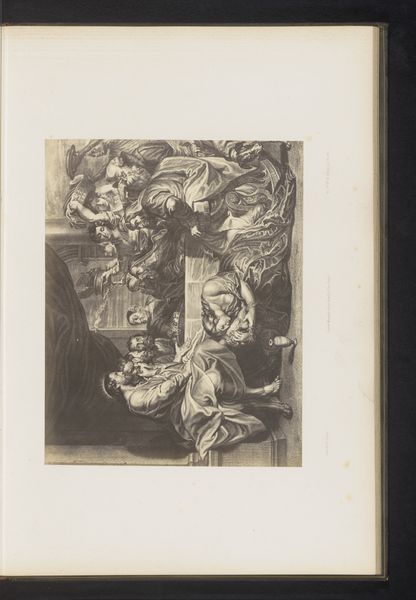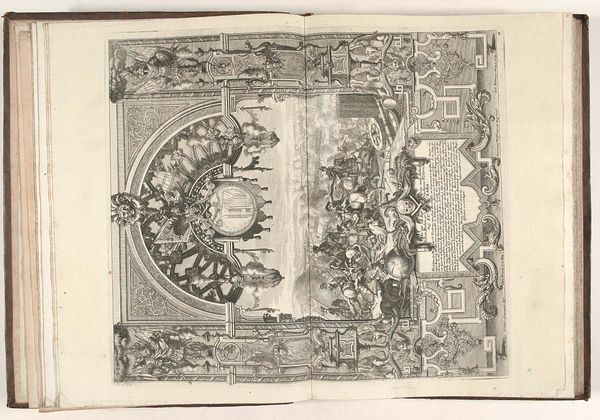
print, paper, ink, engraving
#
baroque
#
ink paper printed
# print
#
old engraving style
#
landscape
#
paper
#
ink
#
line
#
history-painting
#
engraving
Dimensions: height 460 mm, width 384 mm
Copyright: Rijks Museum: Open Domain
Curator: Standing before us is Martin Engelbrecht's "Inname van Oostende, 1706," an engraving from between 1712 and 1715. You can find it here at the Rijksmuseum. Editor: It has this fascinating theatrical quality. Almost like a stage set. The central naval battle is surrounded by allegorical figures and dense ornamental borders. It’s as if the violence of war is being framed, contained by all this decorative flourish. Curator: Indeed, the composition uses elaborate framing devices, very much in line with Baroque aesthetics. Observe the symmetrical arrangement of the naval scene. Engelbrecht masterfully balances depth and detail, leading the eye through the chaos while maintaining an overall sense of order. Editor: But who gets to tell this history, right? What does it mean to present war like this, aestheticized? Ostend, in the Austrian Netherlands at the time, endured a brutal siege. How do these cherubic figures around the battle, that textual block on the right, and those sea monsters speak to that suffering, or do they erase it? Curator: One must acknowledge that Engelbrecht, as the printmaker, operated within established conventions of history painting and printmaking. He would have aimed to create a visually impressive account of the event rather than a journalistic rendering of it. Look at how he uses line weight to distinguish the foreground ships. It draws us into the depth of the scene, doesn't it? Editor: I find myself returning to the symbolic function of the grotesque details framing this idealized depiction. It feels incredibly removed from the human cost. War, then and now, is far more than a visually arresting spectacle; this is where aesthetics brush up against real-world ethics, creating, I think, uncomfortable juxtapositions. Curator: An astute point. Certainly, we can appreciate the craftsmanship—the intricate details etched into the paper—while also reflecting critically on its historical context and representation of warfare. It shows how printmaking participated in shaping and circulating political narratives in the early 18th century. Editor: Absolutely. Art allows us a lens into not only historical events, but also the dominant attitudes towards those events. Works such as these provoke critical reflection and highlight power dynamics that extend well beyond the frame.
Comments
No comments
Be the first to comment and join the conversation on the ultimate creative platform.
